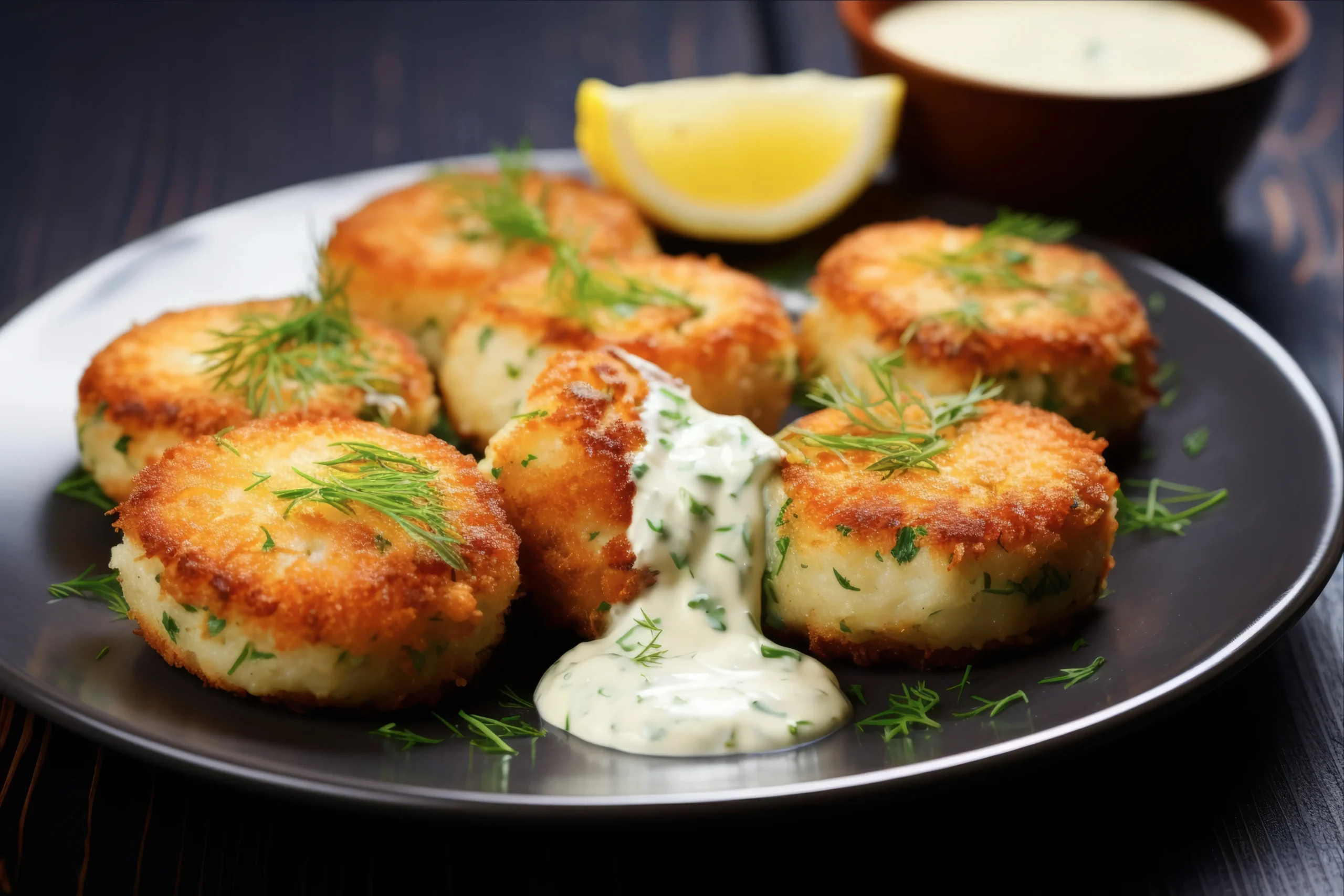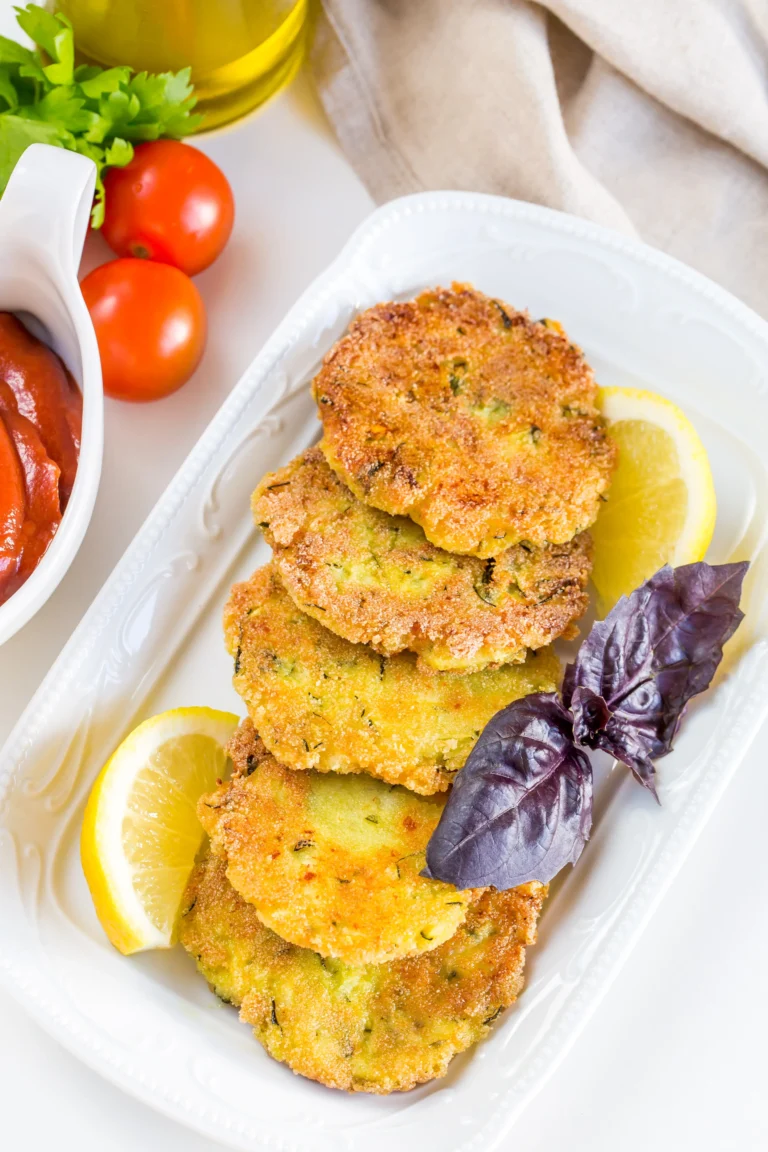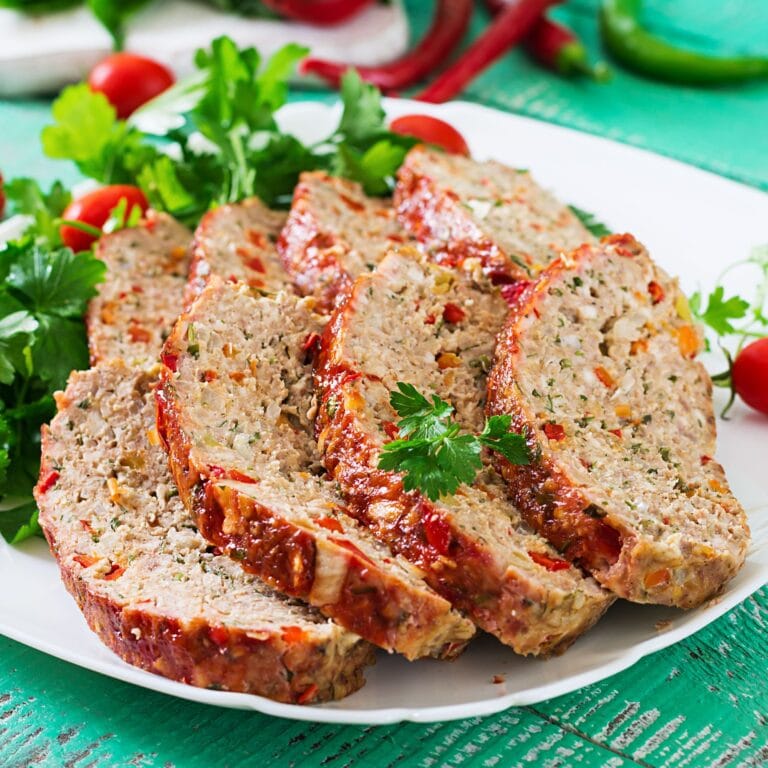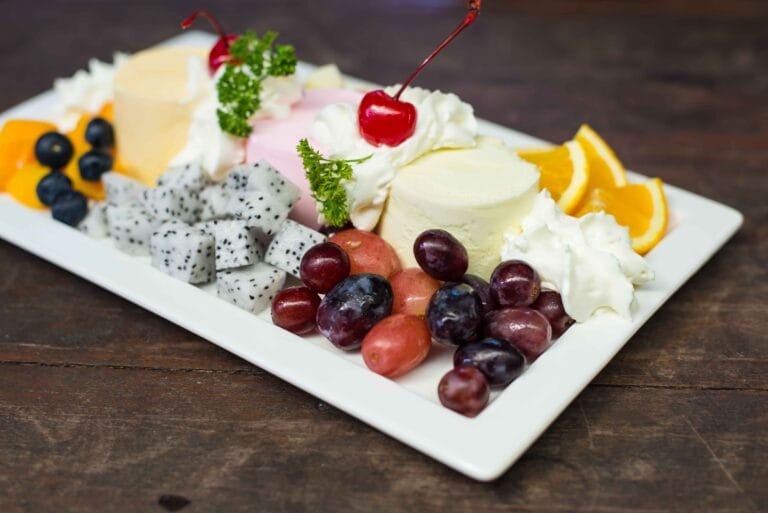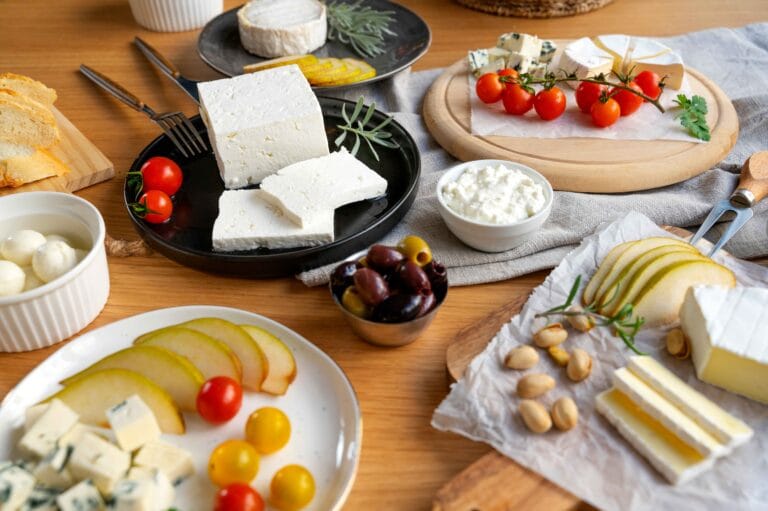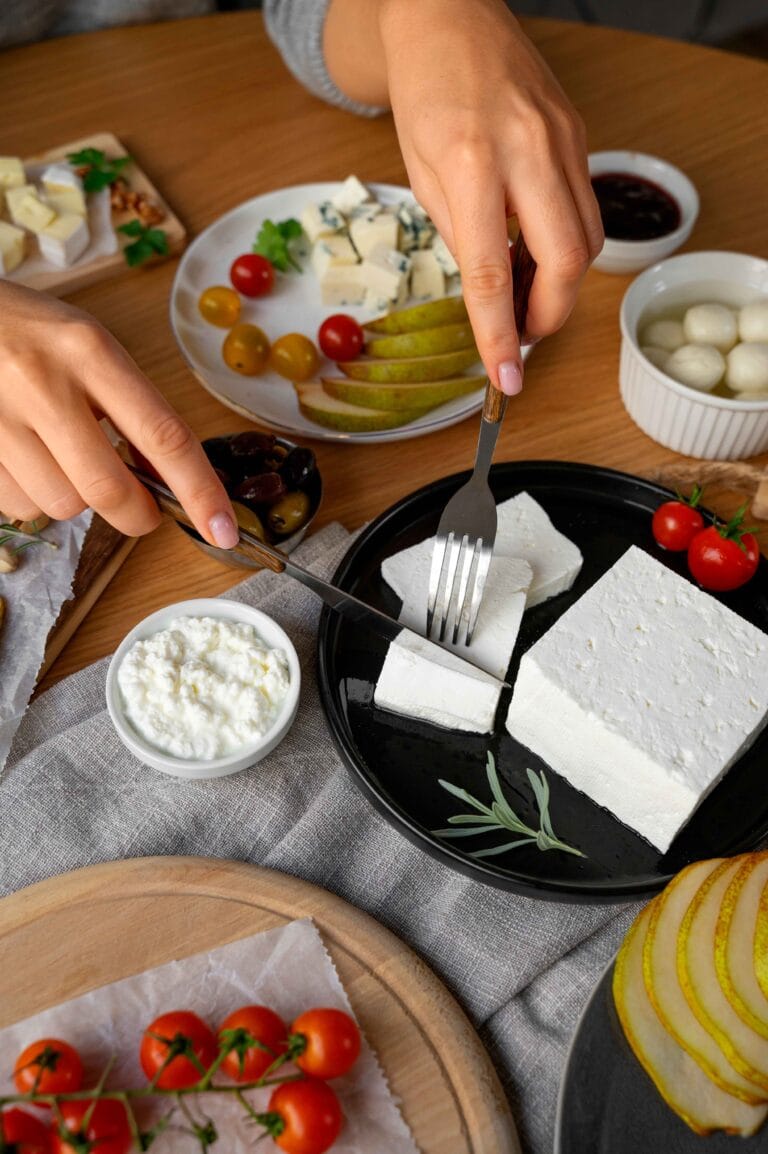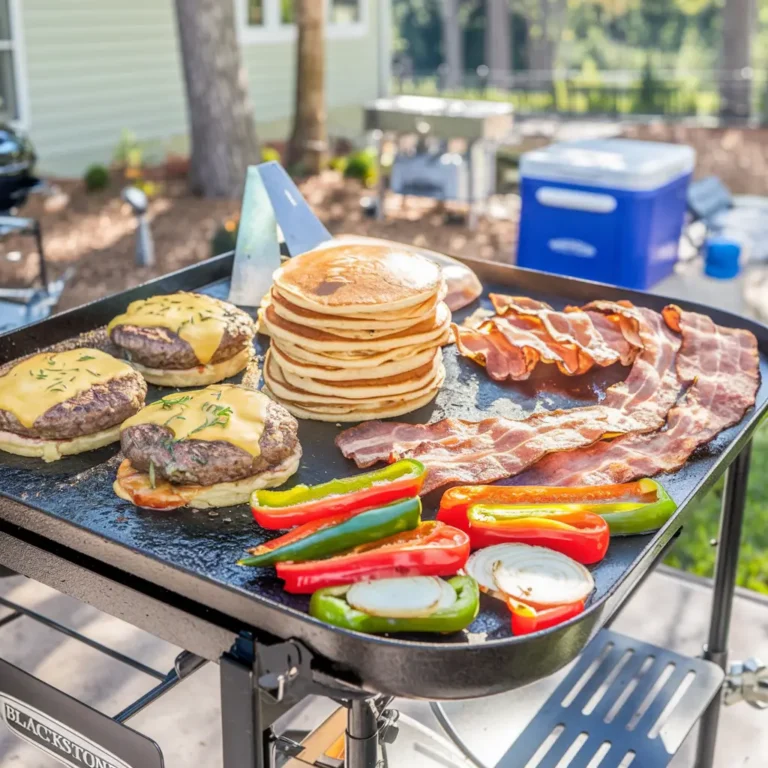The Difference Between Salmon Patties and Salmon Croquettes
Salmon is a beloved ingredient worldwide, celebrated for its rich flavor, versatility, and numerous health benefits. Among the most popular salmon-based dishes are salmon patties and salmon croquettes. While both dishes share similarities, such as the use of salmon as a core ingredient, the difference between salmon patties and salmon croquettes lies in their preparation, texture, and cultural influences.
For a deep dive into what makes salmon patties so versatile, read our What Are the Ingredients in Salmon Patties.
Salmon patties are a simpler, heartier dish, often associated with rustic, comfort-food-style cooking. In contrast, salmon croquettes take on a more refined approach, influenced by French cuisine, with a creamy and smooth texture encased in a crisp exterior.
Both dishes highlight the flexibility of salmon as an ingredient. Whether served as a quick family dinner or as part of an elegant appetizer platter, these recipes reflect unique regional and cultural culinary practices.
In this article, we’ll explore the difference between salmon patties and salmon croquettes, examining their ingredients, preparation techniques, textures, cultural influences, and serving styles. By the end, you’ll have a clear understanding of which dish suits your next meal or special occasion.
Ingredients
The ingredients used in salmon patties and salmon croquettes are one of the most significant factors that distinguish the two dishes. While both rely on salmon as their primary component, the supporting ingredients and preparation styles create unique textures, flavors, and levels of complexity.
Salmon Patties Ingredients
Explore a step-by-step approach to crafting classic patties in our Old Fashioned Salmon Patties Recipe.
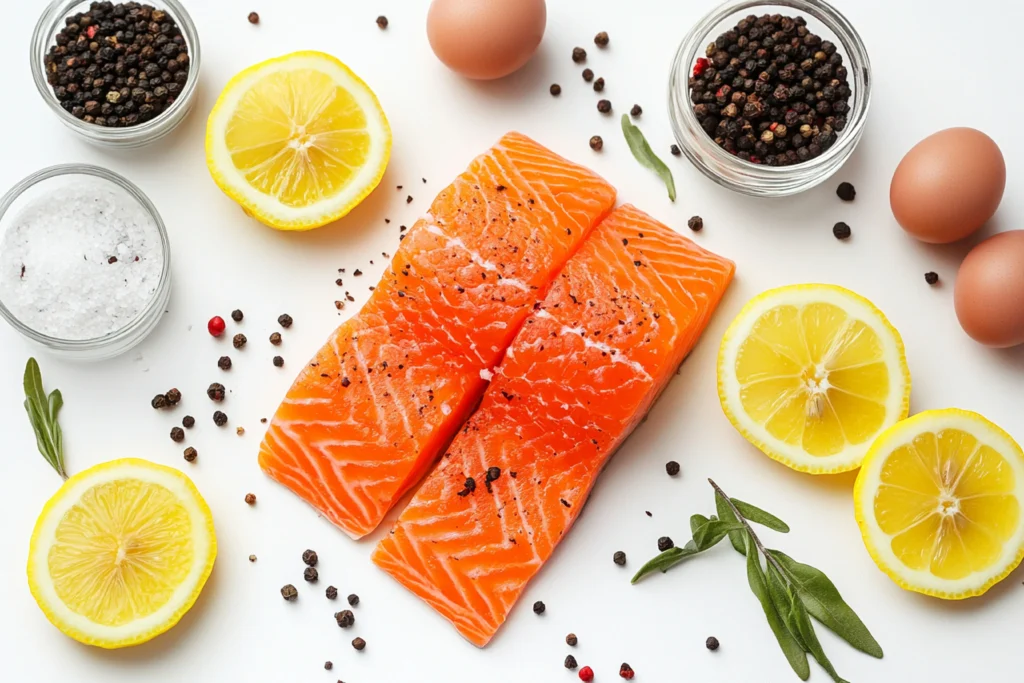
Salmon patties stand out for their simplicity and rustic appeal. Many households rely on them as a staple dish, especially in regions where canned salmon serves as a pantry essential. Here’s a breakdown of the typical ingredients used:
1. Core Ingredient: Salmon
- Type: Most people choose canned salmon because of its affordability and convenience. However, fresh, cooked, and flaked salmon offers a flavorful alternative.
- Preparation: Debone, skin, and flake the salmon to create the base for the patties.
2. Binders:
- Eggs: A primary binder that helps hold the mixture together. Usually, one or two eggs are sufficient for most recipes.
- Breadcrumbs or Crackers: Add crushed crackers, breadcrumbs, or even panko to provide structure and texture.
3. Seasonings and Add-ins:
- Basic Spices: Salt and pepper are essential for flavor.
- Vegetables: Include chopped onions, parsley, or celery to add crunch and aroma.
- Optional Ingredients: Some recipes include a touch of lemon juice, garlic powder, or dill to elevate the flavor.
4. Simplicity:
The focus of salmon patties is on maintaining the salmon’s natural taste. Additional ingredients are minimal and functional, creating a straightforward yet satisfying dish.
Salmon Croquettes Ingredients
Salmon croquettes take a more elaborate and luxurious approach. Their ingredients often reflect French culinary techniques, resulting in a dish that is creamy, rich, and flavorful.
For tips on alternative binders, check out What Can I Substitute for Breadcrumbs in Salmon Patties.
Key Ingredient Differences: Salmon Patties vs. Salmon Croquettes
| Aspect | Salmon Patties | Salmon Croquettes |
|---|---|---|
| Salmon Type | Typically canned; fresh salmon as an option | Often fresh salmon; canned is less common |
| Binders | Eggs, breadcrumbs, or crackers | Béchamel sauce, mashed potatoes, or flour |
| Texture Additions | Onions, parsley, celery | Cream, mashed potatoes, cheese, or béchamel |
| Seasoning | Simple (salt, pepper, parsley) | Complex (paprika, nutmeg, cayenne pepper) |
| Coating | None or light coating | Breaded with flour, egg, and breadcrumbs |
Why Ingredients Matter
The choice of ingredients defines the final texture and flavor of the dish. Salmon patties are hearty and simple, perfect for quick meals, while croquettes are rich, creamy, and ideal for formal settings or appetizers.
Preparation Methods
The preparation methods for salmon patties and salmon croquettes are key to their distinct textures, flavors, and overall presentation. Each dish has a unique technique that complements its ingredients and desired outcome.
Cooking Salmon Patties
People design salmon patties to be straightforward and quick to prepare, making them a go-to meal for busy households. Here’s how most cooks make them:
1. Mixing the Ingredients:
- Step 1: Combine flaked salmon with binders like eggs and breadcrumbs or crushed crackers.
- Step 2: Add seasonings such as salt, pepper, and optional ingredients like chopped onions or parsley for added flavor.
- Step 3: Mix until the ingredients hold together, but avoid overmixing to retain the salmon’s natural flakiness.
2. Forming the Patties:
- Divide the mixture into equal portions and shape it into round, flat discs, similar to burger patties
- The size can vary, but patties are typically 3–4 inches in diameter for easy handling and even cooking.
3. Cooking Process:
- Pan-frying: The most common method. Patties are cooked in a skillet with a small amount of oil over medium heat.
- Time: Each side is fried for 3–4 minutes or until golden brown.
- Texture: The result is a crispy exterior with a firm and flaky interior.
- Baking: For a healthier option, patties can be baked in the oven at 375°F (190°C) for about 15–20 minutes.
- Air-frying: A modern alternative that uses less oil while achieving a crispy exterior.
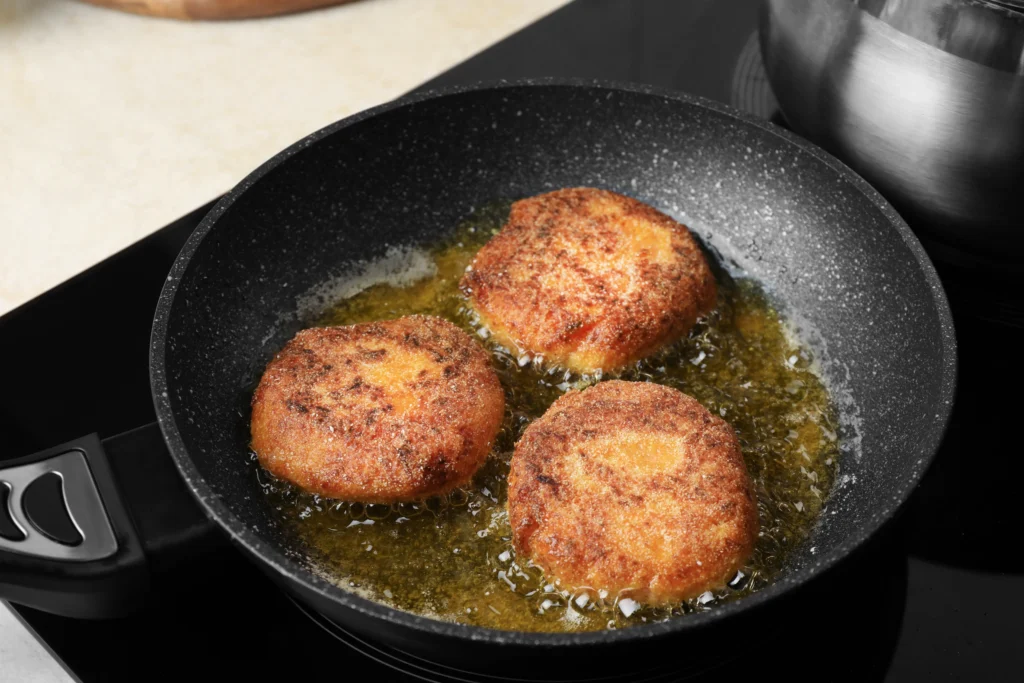
Learn how to avoid common pitfalls while preparing patties in How Do You Keep Salmon Patties from Falling Apart When Cooking.
4. Serving:
Salmon patties are served hot with simple sides such as mashed potatoes, rice, or vegetables. They pair well with sauces like ketchup, tartar sauce, or a squeeze of lemon.
Cooking Salmon Croquettes
Salmon croquettes involve a more elaborate preparation process, focusing on achieving a creamy interior and a crispy, breaded exterior.
1. Mixing the Ingredients:
- Step 1: Flaked salmon is combined with a creamy binder, such as béchamel sauce or mashed potatoes, to create a smooth, cohesive mixture.
- Step 2: Add diced vegetables like bell peppers or scallions, along with seasonings such as paprika, cayenne, or nutmeg.
- Step 3: Chill the mixture for about 30 minutes to make it easier to shape.
2. Shaping the Croquettes:
- The chilled mixture is formed into small oval or cylindrical shapes, which give croquettes their signature elegant appearance.
- Uniformity is crucial for even cooking and a polished presentation.
3. Coating Process:
Croquettes are coated in three steps to ensure a crisp, golden-brown exterior:
- Step 1: Roll in flour.
- Step 2: Dip in beaten egg.
- Step 3: Coat with breadcrumbs or panko.
4. Cooking Process:
- Deep-frying: The traditional method for croquettes, involving frying them in hot oil until they are golden brown and crispy.
- Time: About 2–3 minutes per side or until evenly browned.
- Texture: This method creates a crunchy crust while preserving the creamy interior.
- Pan-frying: A less oily alternative, though it requires careful handling to avoid breaking the croquettes.
- Baking: For a healthier option, croquettes can be baked in a preheated oven at 400°F (200°C) for about 15–20 minutes.
5. Serving:
Chefs typically serve salmon croquettes as appetizers or part of a main course, accompanied by gourmet sauces like remoulade, aioli, or hollandaise. Pair them with leafy greens, rice pilaf, or roasted vegetables for a balanced meal.
Key Preparation Differences: Salmon Patties vs. Salmon Croquettes
| Aspect | Salmon Patties | Salmon Croquettes |
|---|---|---|
| Shaping | Flat, round discs | Ovals or cylindrical shapes |
| Cooking Method | Pan-frying, baking, or air-frying | Deep-frying, baking, or pan-frying |
| Coating | None or light flour dusting | Flour, egg, and breadcrumb coating |
| Interior Texture | Firm and flaky | Creamy and smooth |
Why Preparation Matters
The preparation methods determine the texture and flavor profile of each dish. Salmon patties focus on simplicity and speed, while salmon croquettes prioritize sophistication and richness, making them ideal for different occasions.
Texture and Appearance
The texture and appearance of salmon patties and salmon croquettes are among their most distinguishing features. These elements influence how the dishes are experienced, from the first bite to their visual appeal on the plate. Let’s delve into how these two dishes differ in their tactile and visual characteristics.
Firmness and Flakiness of Patties
Salmon patties are renowned for their firm, chunky texture, emphasizing the natural qualities of salmon.
1. Texture:
- Firm Exterior: The outer layer of salmon patties, especially when pan-fried or baked, develops a crispy, golden-brown crust.
- Flaky Interior: Inside, the salmon remains flaky and textured, as the mixture is minimally processed. The inclusion of breadcrumbs or crackers adds structure without overpowering the salmon’s natural texture.
- Rustic Feel: The texture is intentionally unrefined, contributing to the dish’s hearty and comforting appeal.
2. Appearance:
- Shape: Salmon patties are flat and round, resembling small burgers or fritters.
- Color: The exterior is lightly golden or browned, depending on the cooking method, with occasional visible flecks of parsley or onion.
- Size: Typically 3–4 inches in diameter, they have a uniform but unpretentious presentation.
Creaminess and Sophistication of Croquettes
Salmon croquettes are celebrated for their creamy, velvety interior and crisp, breaded exterior, offering a more refined texture.
1. Texture:
- Creamy Interior: Thanks to the addition of béchamel sauce, mashed potatoes, or cheese, the interior of a croquette is smooth and rich, almost melting in the mouth.
- Crispy Coating: The breadcrumb or panko coating, combined with deep or pan-frying, creates a crunchy, golden shell that contrasts beautifully with the soft interior.
- Sophisticated Layers: Each bite of a croquette offers a blend of textures, from the initial crunch to the creamy core.
2. Appearance:
- Shape: Croquettes are typically shaped into small ovals or cylindrical logs, lending them an elegant and polished appearance.
- Color: The breadcrumb coating turns a deep golden brown when fried, creating an appetizing visual contrast.
- Size: Croquettes are often smaller than patties, designed to be bite-sized or portioned for upscale presentation.
Key Texture and Appearance Differences: Salmon Patties vs. Salmon Croquettes
| Aspect | Salmon Patties | Salmon Croquettes |
|---|---|---|
| Exterior Texture | Firm and lightly crisp | Crunchy and crisp |
| Interior Texture | Flaky and hearty | Creamy and smooth |
| Shape | Round, flat discs | Oval or cylindrical |
| Color | Golden-brown with visible texture | Uniformly golden with a polished appearance |
| Presentation | Rustic and casual | Elegant and refined |
Why Texture and Appearance Matter
The texture and appearance of a dish are integral to its overall experience. Salmon patties, with their rustic and straightforward qualities, are perfect for comforting meals or casual dining. On the other hand, salmon croquettes’ creamy texture and refined appearance make them ideal for appetizers, formal occasions, or gourmet dishes.
Cultural Context and Popularity
Although salmon patties and salmon croquettes share similar ingredients, the difference between salmon patties and salmon croquettes lies in their distinct cultural origins and traditions. These differences influence how people perceive and prepare them. Their popularity varies across regions, occasions, and culinary styles, showcasing the diverse ways salmon is enjoyed around the world.
Southern American Influence on Salmon Patties
1. Origins:
- Salmon patties are deeply rooted in Southern American cuisine, where they are a staple comfort food.
- Historically, canned salmon became widely available during the 20th century, making it an affordable and accessible protein source for families.
2. Practicality:
- Economical Meal: Salmon patties were popularized as an economical way to stretch a meal, especially during lean times.
- Simplicity: The straightforward recipe—requiring minimal ingredients and time—made salmon patties a go-to dish for busy households.
3. Regional Popularity:
- In the Southern United States, salmon patties are often paired with grits, cornbread, or collard greens, creating a wholesome and satisfying meal.
- They are celebrated for their down-home, hearty appeal, symbolizing resourcefulness and tradition.
4. Contemporary Appeal:
- Salmon patties have gained renewed interest as a healthy, protein-rich option, especially when made with fresh salmon or baked instead of fried.
- They remain a nostalgic favorite for many, evoking memories of family meals and classic Southern cooking.
French Influence on Salmon Croquettes
1. Origins:
- Croquettes trace their origins to French cuisine, where they were developed as a refined way to use leftover meat or fish. The term “croquette” comes from the French word croquer, meaning “to crunch.”
- The method of combining proteins with a creamy binder, coating them in breadcrumbs, and frying them reflects classic French culinary techniques.
2. Elegance in Cooking:
- Salmon croquettes embody sophistication, often prepared as appetizers or hors d’oeuvres in formal settings.
- The use of béchamel sauce or mashed potatoes elevates the dish, showcasing the artistry and attention to detail characteristic of French cooking.
3. Global Influence:
- The popularity of croquettes spread worldwide, with each culture adding its twist. In the United States, salmon croquettes became a variation of the original French dish, adapted to local tastes and ingredients.
- Croquettes are also common in other cuisines, such as Japanese korokke or Spanish croquetas, highlighting their versatility.
4. Modern Popularity:
- Today, salmon croquettes are seen as a gourmet option, served in restaurants or at events where presentation and flavor complexity are prioritized.
- They are often accompanied by elegant sauces like remoulade or hollandaise, further emphasizing their refined nature.
Cultural Popularity Comparison
| Aspect | Salmon Patties | Salmon Croquettes |
|---|---|---|
| Cultural Origin | Southern American comfort food | French-inspired gourmet cuisine |
| Historical Context | Economical meal during tough times | Culinary innovation for using leftovers |
| Cooking Style | Rustic and hearty | Sophisticated and refined |
| Occasions | Family meals, casual dining | Appetizers, formal events, and upscale dining |
| Modern Appeal | Healthy and nostalgic | Elegant and versatile |
Why Cultural Context Matters
The cultural roots of salmon patties and croquettes not only define their preparation and presentation but also influence how they are enjoyed. Salmon patties remain a symbol of practicality and warmth, while salmon croquettes offer a taste of luxury and culinary tradition. Understanding these origins enriches our appreciation of both dishes, whether served at a family dinner or a formal gathering.
Serving and Pairing
How a dish is served and paired can significantly enhance its flavor, texture, and overall dining experience. Both salmon patties and salmon croquettes have their distinct serving styles and complementary side dishes, reflecting their cultural origins and culinary intent.
Serving Salmon Pattie
1. Casual Presentation:
- Salmon patties are typically served in a straightforward and unfussy manner, making them perfect for family dinners or quick meals.
- They are often plated as a main course with simple sides to create a hearty, balanced meal.
2. Popular Side Dishes:
- Vegetables: Green beans, peas, or sautéed spinach offer a nutritious and flavorful contrast.
- Carbohydrates: Mashed potatoes, rice, or grits complement the patties’ texture and absorb sauces beautifully.
- Bread: Cornbread or dinner rolls are popular accompaniments, especially in Southern cuisine.
3. Sauces and Condiments:
- Classic Choices: Ketchup, tartar sauce, or a squeeze of fresh lemon are traditional favorites.
- Healthier Alternatives: Greek yogurt mixed with herbs or a light vinaigrette adds a refreshing touch.
4. Versatility:
- Salmon patties can also be served in sandwiches or burgers, layered with lettuce, tomato, and a creamy sauce for a modern twist.
Serving Salmon Croquettes
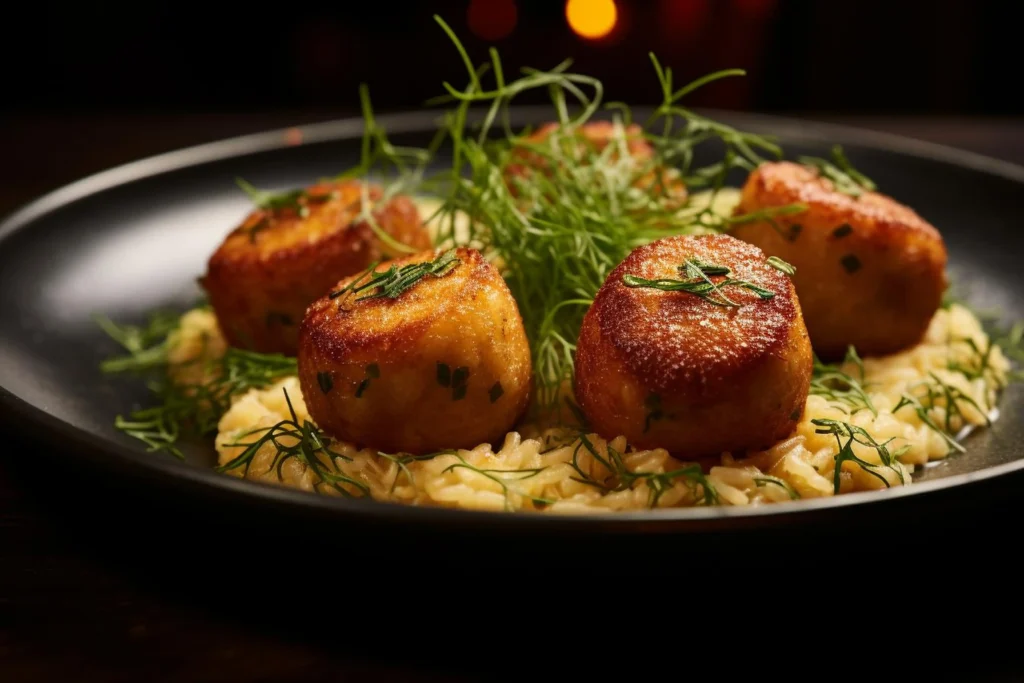
1. Elegant Presentation:
- Croquettes are often served as appetizers or hors d’oeuvres at formal events, plated with attention to detail.
- Their smaller, refined shape makes them ideal for bite-sized portions.
2. Popular Side Dishes:
- Salads: Fresh greens, arugula, or spinach salads dressed with vinaigrette complement the croquettes’ richness.
- Vegetables: Roasted asparagus, glazed carrots, or steamed broccoli balance the creamy interior of croquettes.
- Sophisticated Starches: Rice pilaf, couscous, or even risotto can be served alongside croquettes for a gourmet touch.
3. Sauces and Garnishes:
- Gourmet Sauces: Remoulade, aioli, or hollandaise sauce elevate the dish’s flavor profile.
- Garnishes: Fresh herbs like parsley or dill, lemon wedges, or microgreens add visual appeal and freshness.
4. Versatility:
- Croquettes can be served on their own as a sophisticated starter or paired with sides to form a complete meal. They are also popular in tapas-style presentations, alongside other small dishes.
Comparison: Serving and Pairing
| Aspect | Salmon Patties | Salmon Croquettes |
|---|---|---|
| Occasion | Casual meals, family dinners | Formal dinners, appetizers, special events |
| Presentation | Rustic and simple | Polished and elegant |
| Side Dishes | Mashed potatoes, vegetables, cornbread | Salads, roasted vegetables, rice pilaf |
| Sauces | Ketchup, tartar sauce, lemon juice | Aioli, remoulade, hollandaise |
| Alternative Serving Styles | Sandwich-style burgers | Tapas or small-plate presentations |
Why Serving and Pairing Matter
The serving style of salmon patties or croquettes influences how they are perceived and enjoyed. Simple accompaniments emphasize the rustic charm of salmon patties, while gourmet pairings enhance the sophistication of croquettes. Choosing the right sides and presentation can transform either dish into the centerpiece of a memorable meal.
FAQs
What is the difference between a croquette and a patty?
The primary difference between a croquette and a patty lies in their ingredients, texture, and preparation style.
- Croquette: A croquette has a creamy interior, often achieved by adding béchamel sauce, mashed potatoes, or a similar binder. It is coated in breadcrumbs and deep-fried or pan-fried for a crispy outer layer. Croquettes are typically shaped into ovals or cylinders and are served as appetizers or refined dishes.
- Patty: A patty is firmer and chunkier, with minimal processing of ingredients. It is shaped into flat, round discs and pan-fried or baked. Salmon patties emphasize the natural flakiness of salmon and are usually served as part of casual meals.
How do you keep salmon croquettes from falling apart?
To prevent salmon croquettes from falling apart, follow these tips:
- Chill the Mixture: Refrigerate the croquette mixture for 20–30 minutes before shaping and frying. This helps it firm up and hold its shape.
- Use Proper Binders: Ensure you have enough binders, such as eggs, béchamel sauce, or mashed potatoes, to hold the ingredients together.
- Don’t Overmix: Mix the ingredients just enough to combine; overmixing can weaken the structure.
- Coat Properly: Apply a consistent coating of flour, beaten egg, and breadcrumbs to create a sturdy crust.
- Handle Gently: Use a spatula to carefully flip the croquettes when frying to avoid breaking them.
What is another name for salmon croquettes?
Salmon croquettes are sometimes referred to as:
- Salmon Cakes: A name often used interchangeably with croquettes, particularly in casual contexts.
- Salmon Fritters: This term highlights the frying method but is less common.
- Fish Croquettes: A broader term used in regions where the type of fish is unspecified.
While “croquette” is the most widely recognized term, regional variations may use different names.
What are salmon patties made of?
Salmon patties are typically made of:
- Salmon: Canned or fresh, deboned, skinned, and flaked.
- Binders: Eggs and breadcrumbs or crushed crackers to hold the mixture together.
- Seasonings: Salt, pepper, and optional ingredients like parsley, onions, or celery.
- Optional Flavorings: Lemon juice, garlic powder, or dill for added zest.
The ingredients are mixed and shaped into round, flat discs, then pan-fried, baked, or air-fried. The simplicity of the recipe makes salmon patties a quick and affordable dish.
Conclusion
Salmon patties and salmon croquettes are two delightful dishes that showcase the versatility of salmon. While they share a core ingredient, the difference between salmon patties and salmon croquettes lies in their texture, preparation, cultural influences, and serving styles.
Salmon patties, with their simple ingredients and rustic charm, are a favorite comfort food, particularly in Southern American cuisine. They offer a firm, flaky texture and are easy to prepare, making them a practical choice for busy families.
Salmon croquettes, on the other hand, bring a touch of elegance to the table. Influenced by French culinary traditions, croquettes feature a creamy inside, a crispy outside, and are perfect for formal occasions or as gourmet appetizers.
Both dishes are adaptable, allowing for a variety of ingredients, cooking methods, and pairings to suit personal preferences or dietary needs. Whether you’re in the mood for a quick, hearty meal or a sophisticated starter, salmon patties and croquettes are sure to please.
In the end, the difference between salmon patties and salmon croquettes comes down to occasion and taste. One thing is certain: no matter which you choose, you’ll enjoy a dish that celebrates the rich flavor and versatility of salmon.

